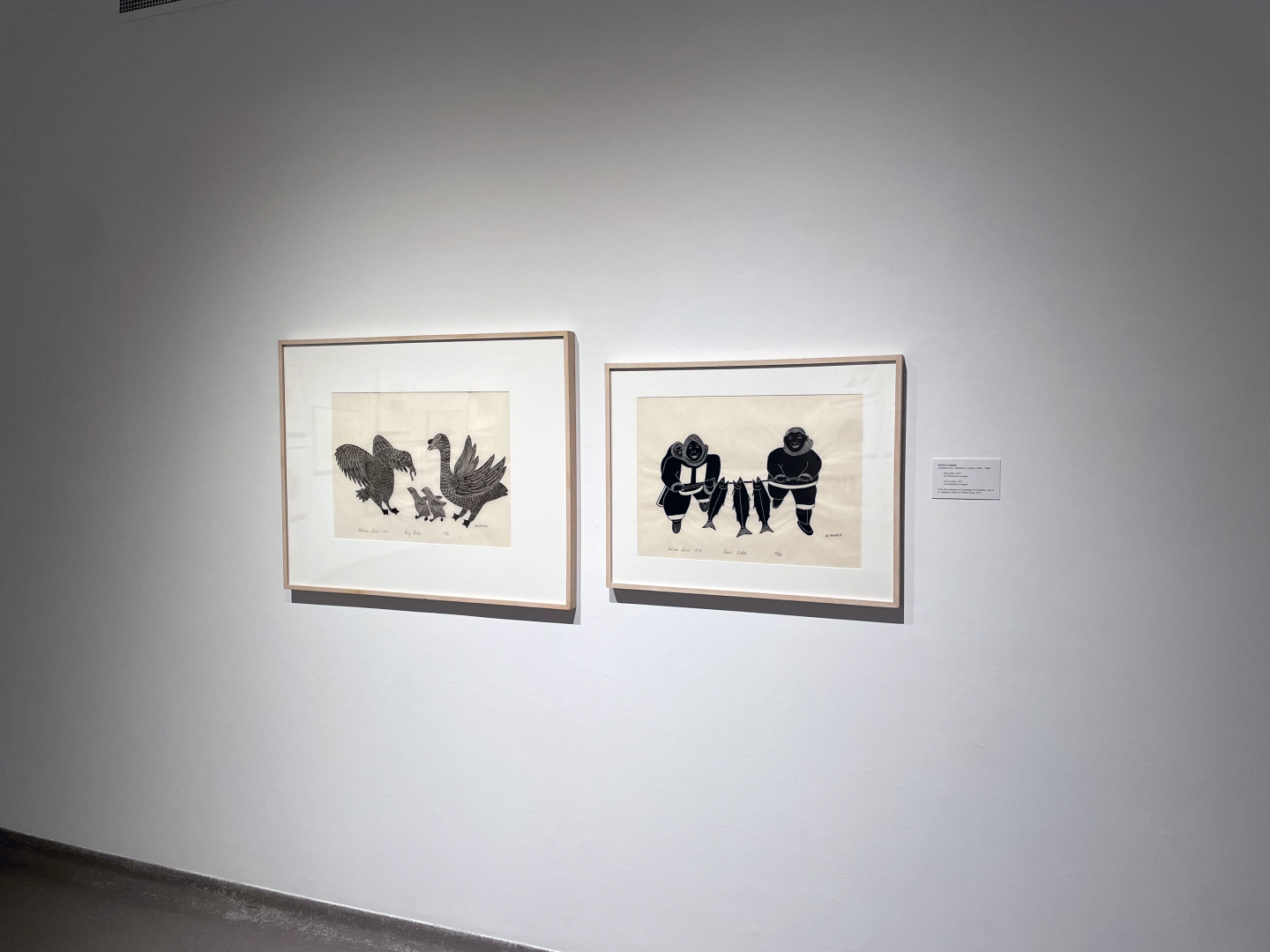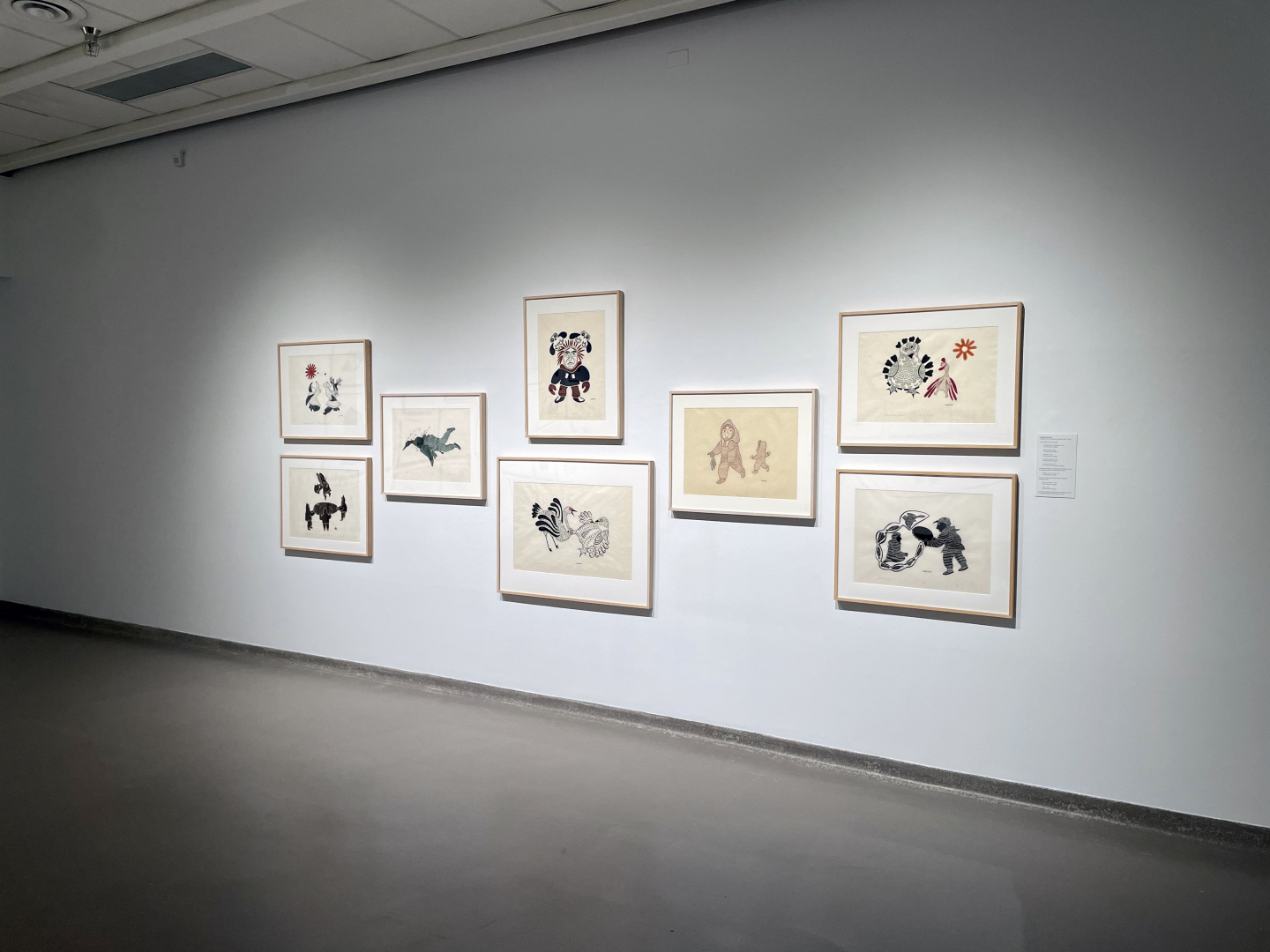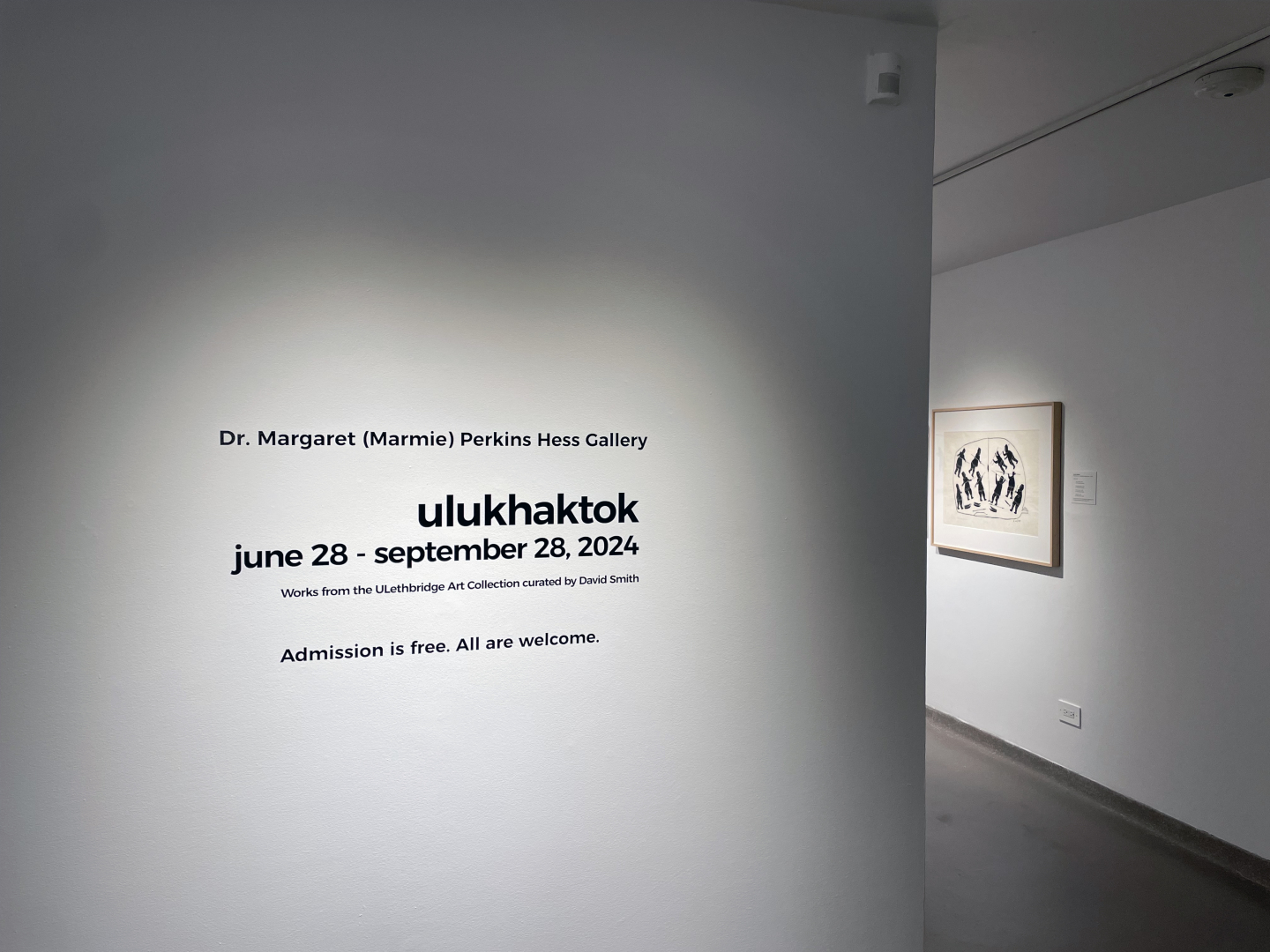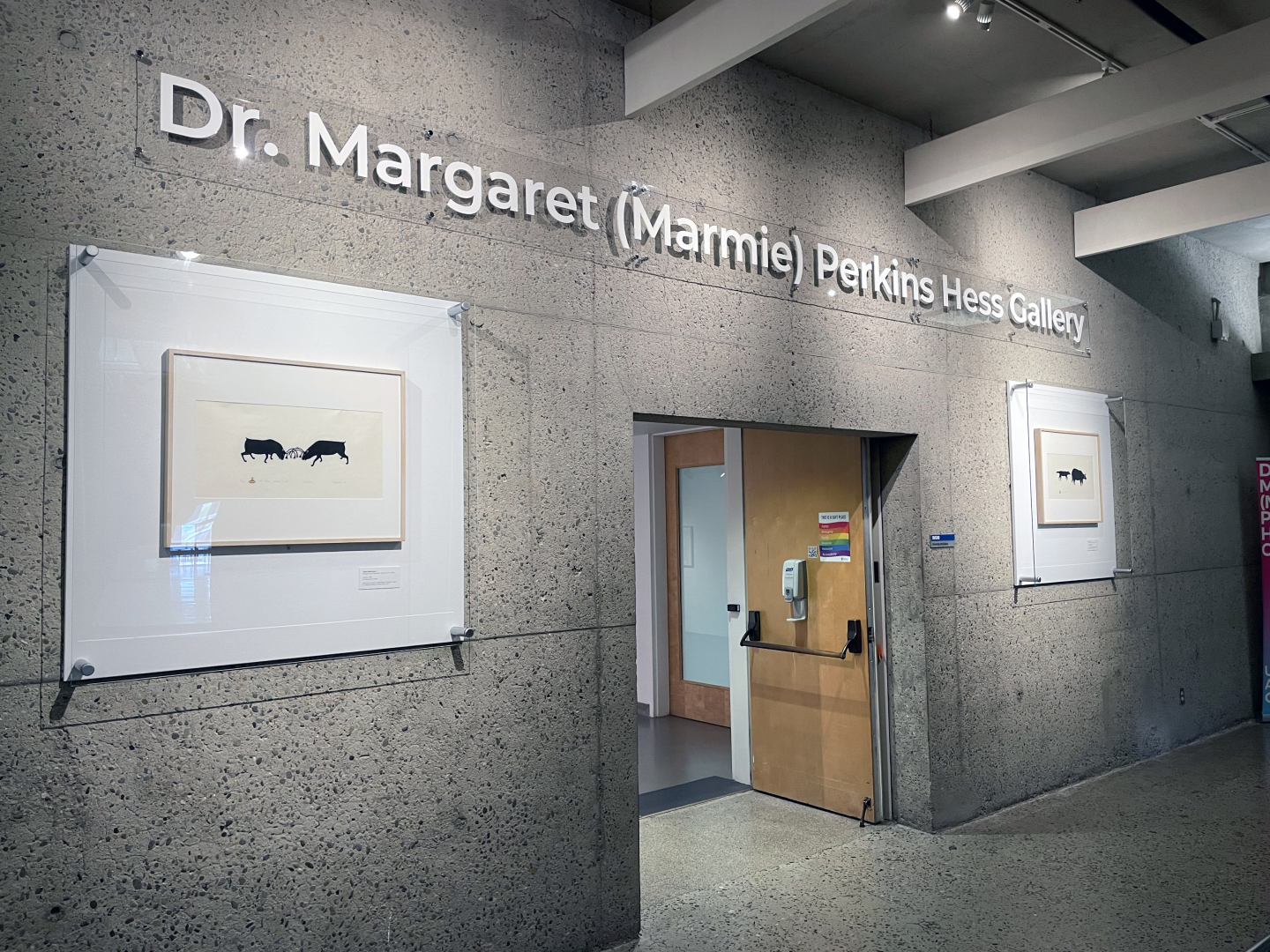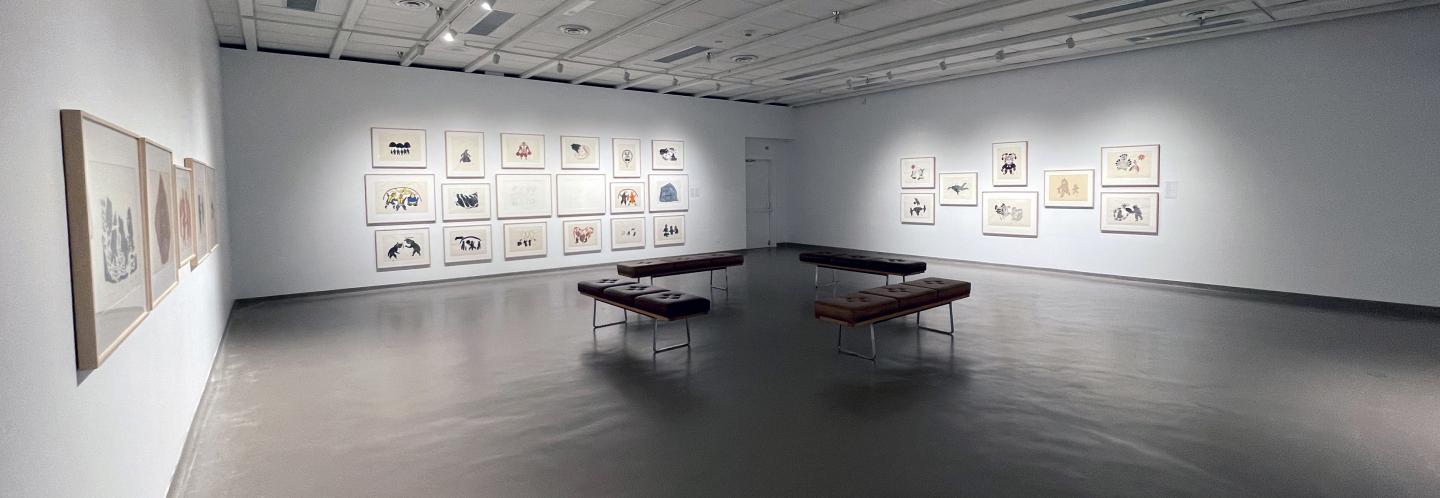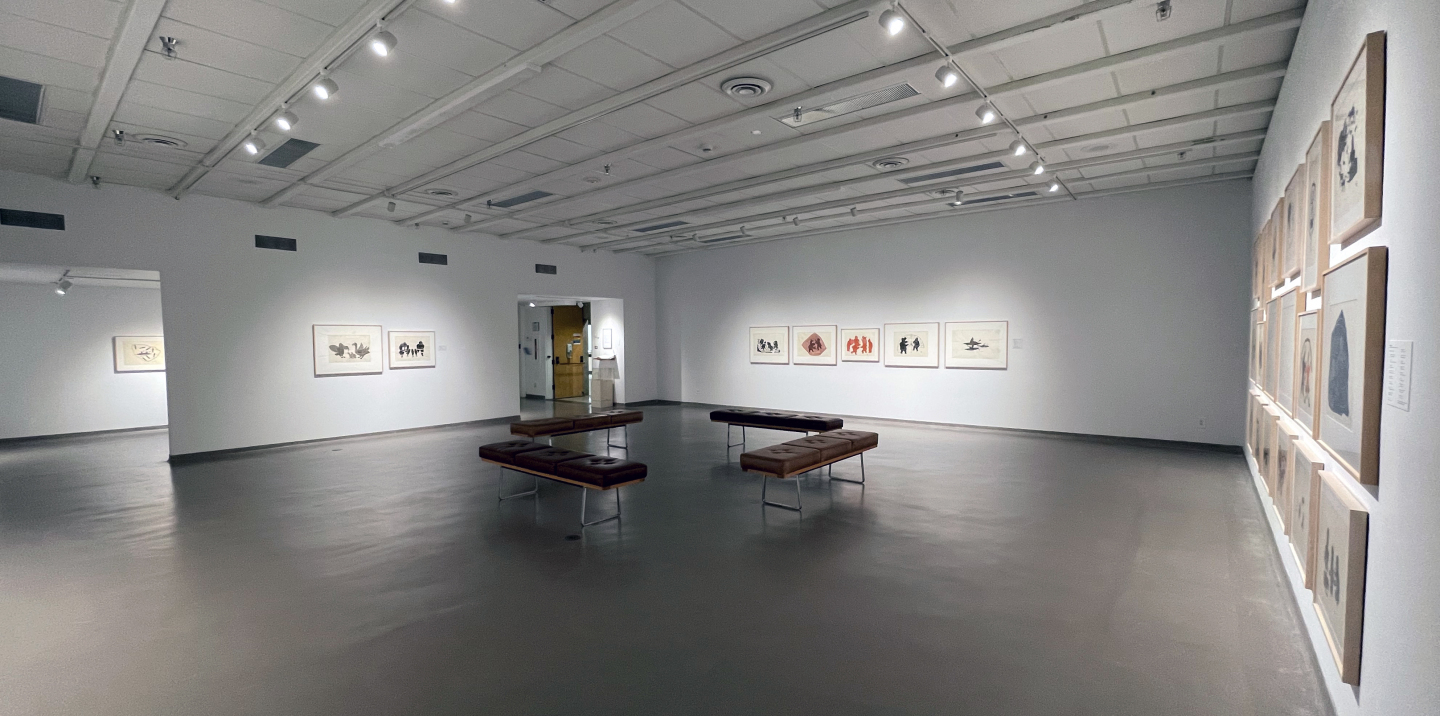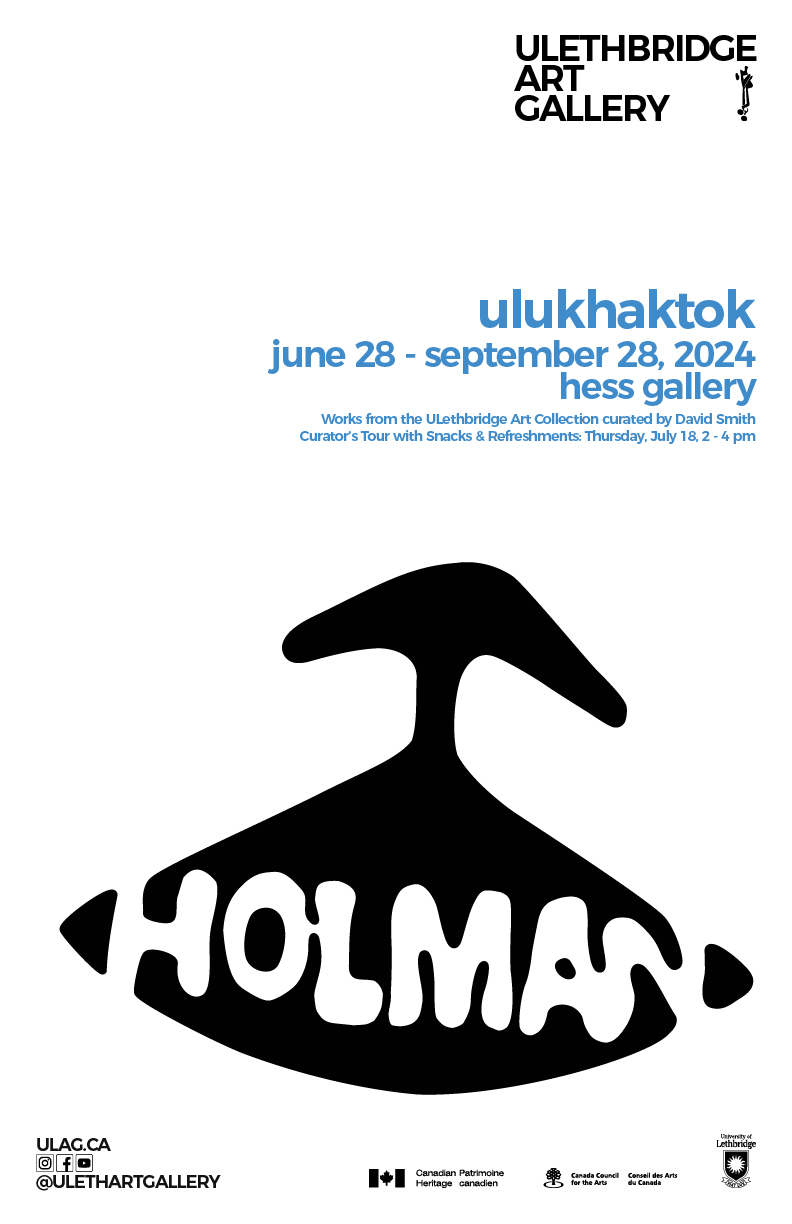Dr. Margaret (Marmie) Perkins Hess Gallery
Ulukhaktok
June 28 – September 28, 2024
Curator: David Smith
This exhibition features prints by ten artists from the community of Ulukhaktok including Helen Kalvak, Agnes Nanogak and Mona Ohoveluk. The selection dates from the 1960s and 1970s and is drawn from the bequest of Dr. Margaret (Marmie) Perkins Hess.
Curatorial Statement:
Ulukhaktok (formerly known as Holman until April 1, 2006) is a small hamlet, located on the west coast of Victoria Island in the Northwest Territories, more than 1,000 kms north of Yellowknife. It has sometimes mistakenly been referred to as Holman Island which is in fact an island situated to the southeast of the community in the Amundsen Gulf. The language spoken in this community is Kangiryuarmiut and means “people of the large bay.” This language is a dialect of Inuinnaqtun, which is the language of the Central Arctic-Kitikmeot communities (such as Cambridge Bay, Kugluktuk, and Ulukhaktok).[1] In Kangiryuarmiut, the name Ulukhaktok means, “the place where ulu parts are found”.
Before the Hudson’s Bay Company set up a permanent trading post in 1939, the community had no permanent settlements but was rather a place that Inuit visited to collect naturally occurring deposits of copper and slate that they would fashion into ulus. An ulu is a woman’s knife used for a variety of purposes including cleaning animal skins, food preparation and making clothes. Today the community is home to approximately four hundred residents.
Since time immemorial, Inuit lived in seasonal camps across the Arctic. In response to hardship in the north, the Canadian government began moving Inuit off the land in the early 1950s, and into permanent settlements as a means of assimilation and to make the administration of social services easier.[2] One of the initiatives of the government was the establishment of Inuit led co-operatives which were supported with loans and equipment and staff. Although the co-operatives are multipurpose, involved in retail stores, hotels, restaurants, tourism, construction projects and the provision of municipal services, their most successful activity has been the production of stone carvings and limited edition prints for sale in an international market.[3] In 1959, Kinngait (formerly known as Cape Dorset) released the first annual portfolio of limited editioned prints. Other communities followed suit, including Ulukhaktok in 1964, which began with a collection of thirty-four prints by five artists. Included in this exhibition are four prints from the very first collection, two of which can be found on the panels outside the gallery entrance.
In the early years of print portfolios from Ulukhaktok, to which most of the prints in this exhibition date, the dominant type of printmaking was stonecut. In this technique a skilled carver transfers a drawing from another artist onto a prepared stone surface. The drawing must be accurately drawn in reverse as the carver removes areas of stone. When the carver finishes, a roller applies ink to the raised areas of stone allowed to remain and a sheet of paper is laid down on top and gently rubbed to encourage the ink to transfer to the paper. Ulukhaktok artists used stonecut and occasionally stencil until the 1977 collection was published, which included lithographs, stencils and stonecuts. The early prints have been described as being characterized by crisp silhouettes and limited use of colour.[4] Though there is great variation in the style from one artist to the next, throughout the exhibition the repetition of subject matter depicting scenes of everyday life, animals and stories unify the collection. The prints in this exhibition all come from the first thirteen years of printmaking which would continue for another twenty-four years. The printmaking studio at Ulukhaktok unfortunately ceased its operations in 2001.
In 2017 the U of L Art Gallery received a bequest from the estate of Dr. Margaret (Marmie) Perkins Hess which included more than six hundred Inuit prints. This exhibition contains all of the forty-two prints and a rare soapstone sculpture created in Ulukhaktok drawn from the Hess bequest in addition to the one print by Agnes Nanogak that the university had acquired previously. The Hess bequest added nine more artists from the community to the University’s collection and most of the prints are being exhibited here for the first time. Dr. Hess opened and operated a commercial gallery (Calgary Galleries Ltd.) through the 1970s, and it was one of the first galleries in Canada to promote work by Indigenous artists. To celebrate her bequest, this gallery was named in her honour. It is only possible to tell the story of early printmaking in Ulukhaktok through the University’s collection thanks to this remarkable and generous gift.
David Smith
Assistant Curator / Preparator
[1] Inuvialuit Digital Library https://inuvialuitdigitallibrary.ca/languages
[2] Canadian Museum of History https://www.historymuseum.ca/blog/inuit-settlement/
[3] The Canadian Encyclopedia https://www.thecanadianencyclopedia.ca/en/article/inuit-co-operatives
[4] Darlene Wight, Holman: Forty Years of Graphic Art (Winnipeg Art Gallery, 2001) pg.6



